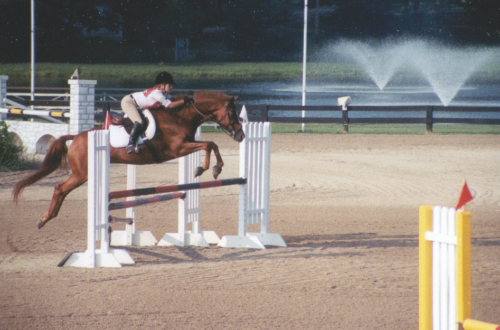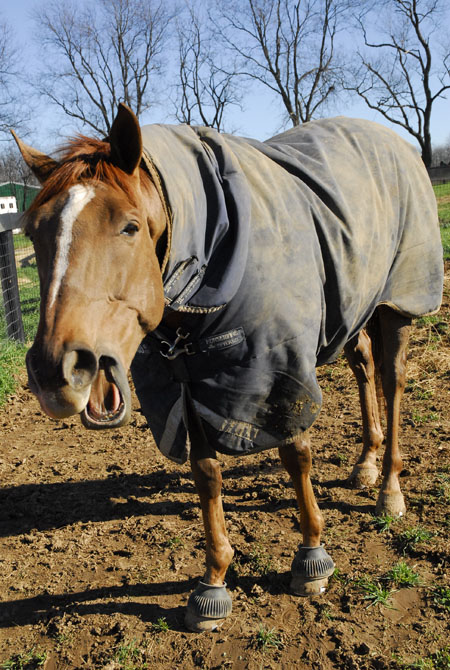Spring Has Sprung, So Have Hoof Problems
Have you ever heard the statement, “no hoof, no horse”? What about, “If you think a good farrier is expensive, try using a bad farrier”. Both of those statements are truer than some people know. We thought sharing some ideas for what to do when your barefoot horse has been trimmed “too short” or if your horse pulls a shoe and tears off hoof in the process would be helpful.
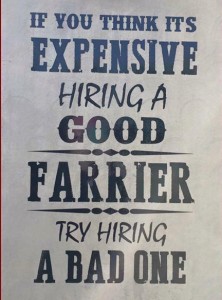
To begin, there is an ideal that most farriers are trained to trim/shoe. The hoof should have the correct angle and depth and is trimmed and rasped according to shoes or barefoot. When going barefoot, most farriers will do what is called a “pasture roll.” This is to make the hoof blunt and rounded so there are no sharp edges to catch on other hooves or legs or potential scree found in a field (rocks, divots, etc.). It also keeps the hoof from unwanted cracks and splaying. When shoeing a hoof, they usually stop rasping before creating the blunted edges and fit the shoe to the hoof after it has been trimmed. Sometimes horses pull those shoes, and when they do, they tear hoof wall away in the process.
What happened?
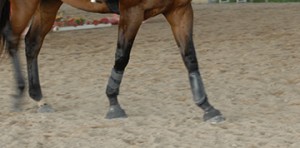
Now the farrier has trimmed your barefoot horse so short or your horse was galloping in the pasture and ripped a shoe and hoof off. He/she is “walking on eggshells”. This phrase means your horse is walking very carefully and tenderly, possibly showing some signs of lameness. This same horse will have a strong digital pulse in the leg(s) where the hoof is short and usually there will be heat in the hoof. Sometimes trimming too short or losing a shoe can lead to a bruised foot (this is easy to see on a horse with a white foot, the bottom of the hoof will have a deep red undertone) and possibly an abscess if not caught soon enough or treated well enough, or sometimes no matter what you do, they will anyway. The best case scenario is that your horse is sore for a week or two until the hoof grows out some. The worst case can lead to other soundness issues and soreness as your horse compensates for the pain in his feet.
What do I do?
First, you should always consult with your veterinarian, farrier, barn manager, or trainer before using any material you are not educated thoroughly on. If you are concerned about using a product or unsure of its side effects, or doses, or uses, you should always get good advice from professionals.
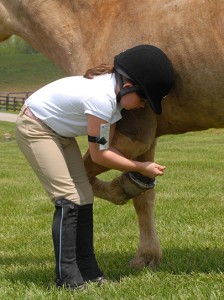
When you have a horse with one of these issues, the first thing you want is the horse to try to stay quiet. It is a good thing if they lay down because it takes the pressure off of the foot. It’s also good if they are in a stall, not a hard paddock where there might be rocks. The next thing you can do is treat the feet. We took to social media to get an idea of what some people do to treat horses’ feet that have been trimmed short or bruised somehow. We got answers from long time horsemen and women, veterinarians, upper level eventing grooms, Pony Club leaders, and people who just had some great ideas. Below are some of the ideas that were offered:
1) Stall rest, Epsom salt soaking, and Bute. This was an old school way of thinking. Keep the horse quiet, soak the feet with Epsom salts to draw out the sting and give an NSAID to help keep the pain at bay.
2) Stall rest, Magic Cushion Packs, and Bute. Magic Cushion is a fabulous hoof-packing you can get at most tack stores. It is made for horses with sore feet. It draws heat out of the hoof and provides cushioning under the sole. The downfall to Magic Cushion is that it is sticky (it comes off with rubbing alcohol) so for horse management purposes, users should plan ahead to keep from getting messy (rubber gloves are your best friend).
3) Venice Turpentine. Lots and lots. This suggestion is normal and Venice Turpentine has been around a long time as a good hoof hardener for horses with sore or tender feet. It is painted on once or twice a day.
4) Formalin aka Keratex hoof hardener. This was an old school method of hoof hardening. Formalin (from formaldehyde) is a preservative used sometimes in embalming, but farriers found that it was drying too quickly and creating brittleness in the hoof. In creating Keratex, its manufacturers added ingredients to help make formalin adhere to the hoof and penetrate the outer layers of the horn to help strengthen the hoof.
Some of the suggestions continued to get more interesting. …
5) Soak unused tack sponges in Venice Turpentine and wrap feet. This not only keeps the handler from having to apply it multiple times over a day or two, it also adds extra cushion to a foot that may have had a shoe torn off and be sore.
6) Sugardine. This is a homemade remedy of sugar and iodine mixed to make a paste and put in a hoof pack. It’s an old time homemade remedy that some old trainers and barn managers swear by.
7) Magnapaste, similar to sugardine but sold under the brand name instead of mixing it yourself. It is Epsom salts that are premixed with a liniment and made into a paste form.
8) Rebound, similar to Magic Cushion. This particular hoof packing is made by a small business owner and upper level eventing competitor. Its ingredients include some of the ones mentioned above, but add some homeopathic anti-inflammatory elements.
As you can see, there are many ways to treat hoof soreness. It is best to find a technique that works best for you. Some people combine many methods to help get the most “bang for their buck”. The prevailing thought in our little survey was to always use a little stall rest and some NSAID (anti-inflammatory) help for a couple of days, paired with a topical of some kind. Whatever method you use, be sure to use your best judgement when packing feet for turnout or for stall rest as well as keeping an eye on any products you use to make sure they aren’t causing hair to fall off around the hoof or more soreness in the foot.

